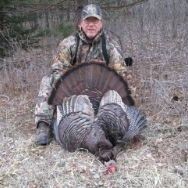Memorandum Of Understanding
-
Your Responses - Share & Have Fun :)
-
.thumb.jpg.5c1a86e9339e49e53f5bfefed2220054.jpg)
By LakeofthewoodsMN · Posted
On the South Shore... There is still some ice fishing taking place in a few areas of the lake along the south shore but most resorts and outfitters have pulled their fish houses and called it a good year. Make sure to call ahead to the resort or outfitter for current conditions if you plan on getting on the ice. Safety first always. For those still fishing, some are still targeting walleyes. There continues to be a good morning / evening bite along the south shore just prior to sunset. Quality fish are being caught in a number of areas. Most still ice fishing are targeting trophy pike. It was another great week with some big fish caught. Another week of big fish tipping that 40 inch mark with big girths. Suckers, frozen alewife and smelt set about a foot under the ice or just off of the bottom have proven effective. On the Rainy River... Spring open water fishing has begun! The Rainy River is open in many areas and as of Monday, March 31st, there are two boat ramps open. The Nelson Park boat ramp in Birchdale and the Frontier Access (about 8 miles to the west of Nelson Park) are both clear of ice. Boats are running the river and the ice pack is deteriorating by the day. Initial reports for walleyes are very good with some big fish being caught. Most are jigging with either plastics or minnows. Use bright plastics such as chartreuse, orange, pink and white. for minnows, emerald shiners, fatheads and rainbows have all been productive. Trolling crankbaits against the current is also effective and will catch fish. This is also a good technique to cover water if you are not on fish. Rainy River walleye fishing is catch and release from March 1st through April 14th on Four Mile Bay and the Rainy River. Initial reports for sturgeon are also good. Anchored up in a hole or on the slope of a hole with a no roll sinker and sturgeon rig is the ticket. Lots of walleye anglers reporting sturgeon hookups as well. Here are the seasons for sturgeon fishing... -Catch and Release Season: May 8th – May 15th and October 1 – April 23rd. -Harvest Season: April 24th – May 7th and July 1 – September 30. -Closed Season: May 16th – June 30th. Up at the Northwest Angle... It has been a great ice fishing year up at the Angle. While there are a few locals still getting out, resorts have pulled off their fish houses and called it a year. Plan for the MN Fishing Opener which is Saturday, May 10, 2025! The walleye and sauger season is open through April 14th. Pike fishing never closes, and perch and crappie remain open year-round as well. You can fish for sturgeon through May 15th. -

By leech~~ · Posted
Nice fish, you put in the time for it, it sounds like! 😀 Oh Wanderer wanted me to ask. How was the slush? 🤣 -
By Hookmaster · Posted
Congrats on your lake trout, JerkinLips!! Your persistence paid off!! Don't know the regs up there, are you able to keep a few? -

-

-

-
By JerkinLips · Posted
Took my last ice fishing trip of the season to Burntside on Thursday. Went out on the snowmobile to fish better spots. I waited until daylight to go out so I wouldn't get lost or run into open water. When I got to my destination I discovered that the battery fell off of my Ion auger on the trip out (I won't make that mistake again). I backtracked all the way back to the landing before finding it on the ice. I got my lines in the water just before sunrise and caught a 24 inch lake trout 45 minutes later. Always exciting watching the lake trout peel line off of the tip-up with their strong runs. He quit running with the pike sucker soon after I took the video and I thought it may have dropped the minnow. Pulling the line in by hand I could feel it still on so I set the hook and caught it on the lip. Think I caught it before it was going to swallow the minnow and take its 3rd and final run. Was nice to finally catch a laker on Burntside again after 5 straight trips getting skunked. It was a beautiful day on the ice with good ice conditions, warm weather, and fairly calm winds. The creel survey guy stopped and checked on me. He said I was the only one he saw fishing on Burntside that day. He said that most anglers he checked on Burntside that winter were skunked for lake trout, so I guess it was just not my problem alone. 20250327_072410.mp4 -

-

By leech~~ · Posted
But, the deep fried Okra went in the trash can. I've tried it a few times and it's just not for me. Neither is Grits, chittlins, or crackling! 🤮 -

By Mike89 · Posted
hope you finished it!! WOW!! that looks huge!!! but good eats!! Yep, my buddy ordered one too so it was Game on! 😋
-

Recommended Posts
Join the conversation
You can post now and register later. If you have an account, sign in now to post with your account.
Note: Your post will require moderator approval before it will be visible.